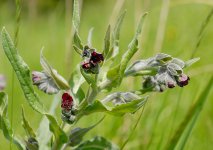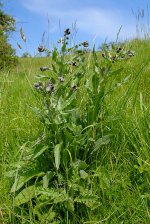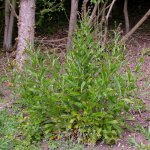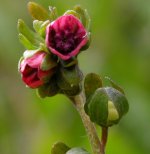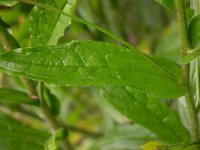While out walking I came across several samples of a rather attractive wild flower. Most had single stems with multiple small red flowers and were about 8" tall. The large specimen was about 2 feet tall with multiple stems. See photograph. The habitat was grassland in a nature reserve. The soil was thin and chalky with an underlying chalk substrate.
The pictures are a bit grotty due to the strong wind.
Any help to get an id would be appreciated.
Also I have another flower to id, but sadly no photo. It's easy to describe. It looked like an upright artists paintbrush, with yellow bristles. About 4" tall, stem green, narrow at the base, broader at the top, no apparent leaves, at the top 1/2" long yellow 'bristles' seemingly covered in pollen. Growing on chalk grassland in early May.
Thanks.
Leif
The pictures are a bit grotty due to the strong wind.
Any help to get an id would be appreciated.
Also I have another flower to id, but sadly no photo. It's easy to describe. It looked like an upright artists paintbrush, with yellow bristles. About 4" tall, stem green, narrow at the base, broader at the top, no apparent leaves, at the top 1/2" long yellow 'bristles' seemingly covered in pollen. Growing on chalk grassland in early May.
Thanks.
Leif




